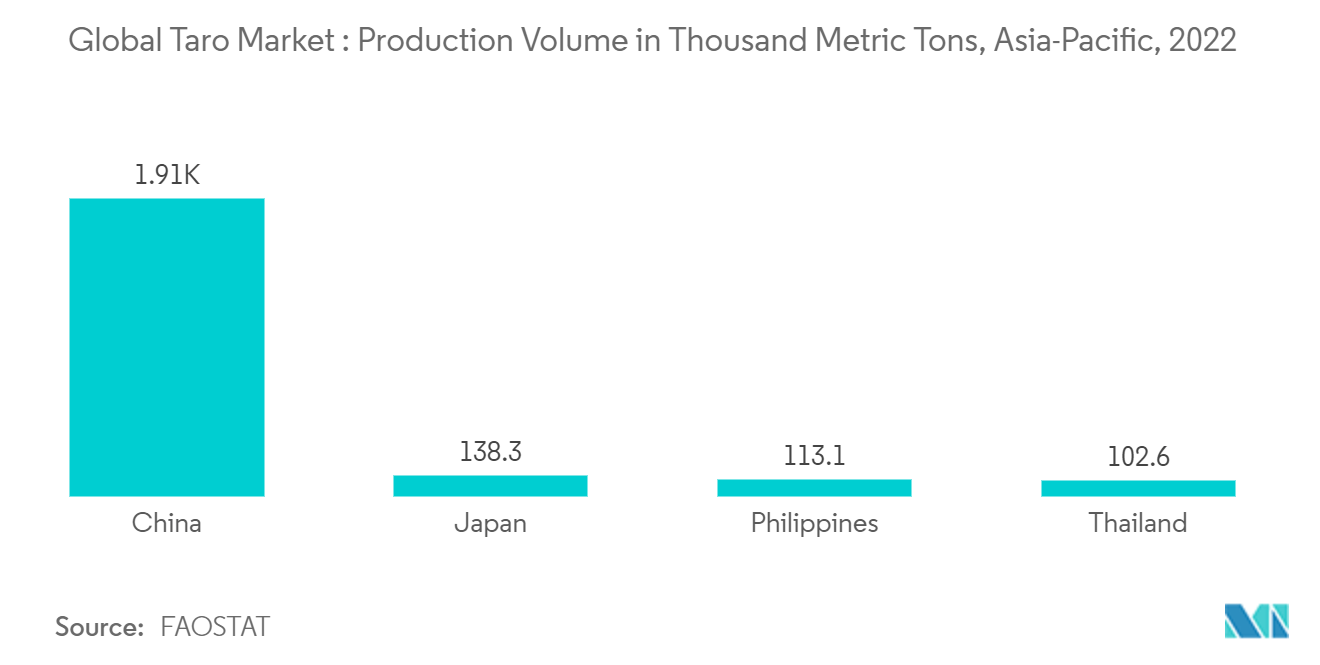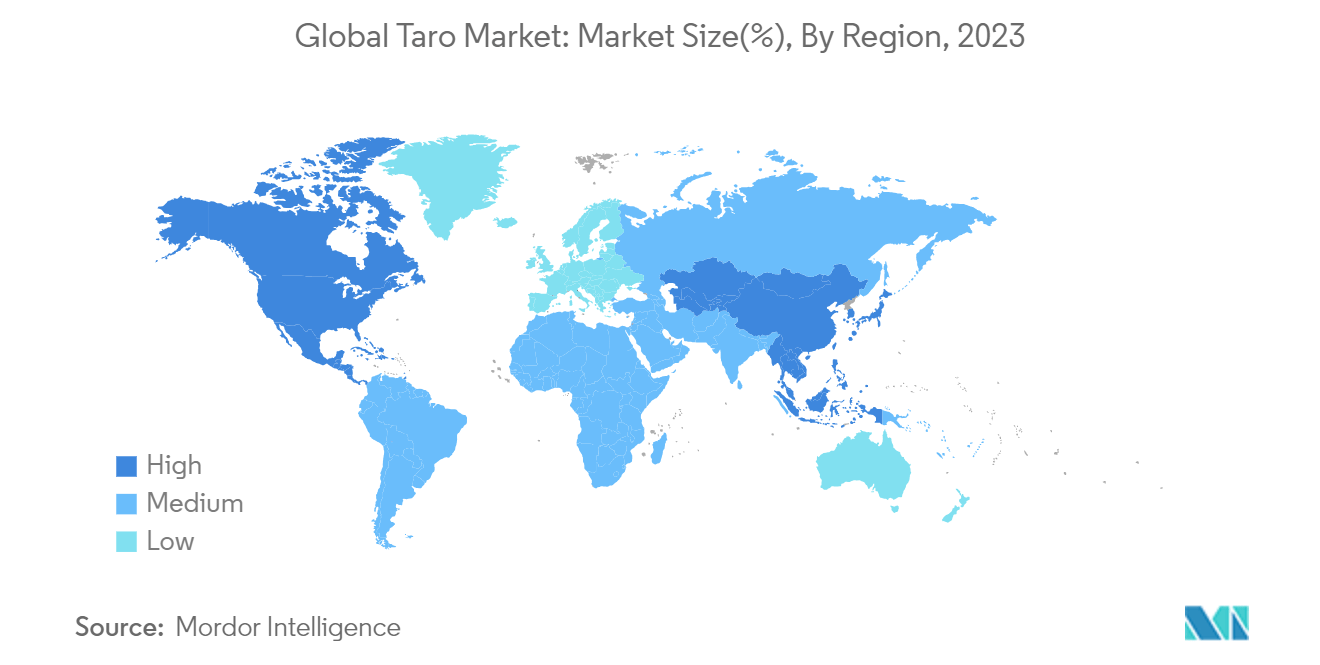Market Trends of Taro Industry
Growing Ethnic Food Demand and Culinary Versatility is Driving the Market Growth
Taro serves as an excellent source of carbohydrates, commonly used in infant weaning diets and low glycaemic index foods suitable for diabetics. Its tuber contains starch molecules smaller than those found in potato, corn, and wheat, making it valuable in cosmetics and pharmaceuticals as a binding agent in tablets. Both corms and leaves of taro provide high-quality protein and are rich in phosphorus, potassium, calcium, and bioavailable iron. Additionally, taro starch shows potential in biodegradable plastic production, offering a possible solution to global plastic pollution. Due to its nutritional benefits and applications in various industries, the global demand for taro is increasing.
Taro is a staple ingredient in many ethnic cuisines worldwide, particularly in Asian, African, and Pacific Islander cultures. Its starchy corms are versatile, featuring various traditional dishes. In Hawaiian cuisine, taro is used to make poi, a smooth paste that serves as a dietary staple. Southeast Asian countries like the Philippines use taro in desserts such as Halo-Halo and savory dishes like Laing, which incorporates taro leaves cooked in coconut milk. In Africa, taro is commonly boiled, mashed, or fried, providing an important source of carbohydrates. Caribbean cuisine uses taro (known as dasheen) in soups and stews, contributing a rich, creamy texture. The increasing popularity of ethnic foods globally has driven demand for taro, as more consumers discover its unique flavor and culinary versatility.
According to FAOSTAT, China led taro production in the Asia-Pacific region in 2022, producing 1.9 million metric tons. Japan followed with 138.9 thousand tons, while the Philippines produced 113.1 thousand metric tons. Other significant producers included Fiji, Indonesia, and Papua New Guinea. These countries benefit from favorable climate and soil conditions for taro cultivation, contributing to their high production levels. The increasing demand for taro, coupled with robust production, is projected to drive growth in the Asia-Pacific taro market during the forecast period.

United States Leads the Global Taro Imports
The United States is a significant importer of taro, driven by its culinary versatility and nutritional benefits. Taro is used in various dishes, including chips, soups, and stews, and serves as a healthier alternative to traditional snacks like potato chips. Its high nutritional value, being rich in carbohydrates, vitamins, and minerals, appeals to health-conscious consumers. In restaurants, taro root is primarily used to make chips, offering a healthier option compared to corn or potato chips. According to ITC Trade data, in 2023, the United States imported 64,309 metric tons of taro valued at USD 106,551 thousand, compared to 63,707 metric tons in 2022.
In 2023, Ecuador, Mexico, and Costa Rica were the primary sources of taro imports for the United States. Ecuador led with imports valued at USD 59,546 thousand, followed by Mexico at USD 19,093 thousand and Costa Rica at USD 11,099 thousand. The increasing demand for taro in the U.S. market is attributed to its culinary versatility and perceived health benefits.
The demand for cocoyam (taro) in the United States is driven by its nutritional benefits, culinary versatility, and the increasing popularity of ethnic foods. Cocoyam is rich in dietary fiber, vitamins, and minerals, making it a healthy alternative to other starchy foods. It is used in various dishes, including soups, stews, and chips, and as a flour substitute in baking. Additionally, the trend towards plant-based diets has further increased its popularity as a nutritious and versatile ingredient.


